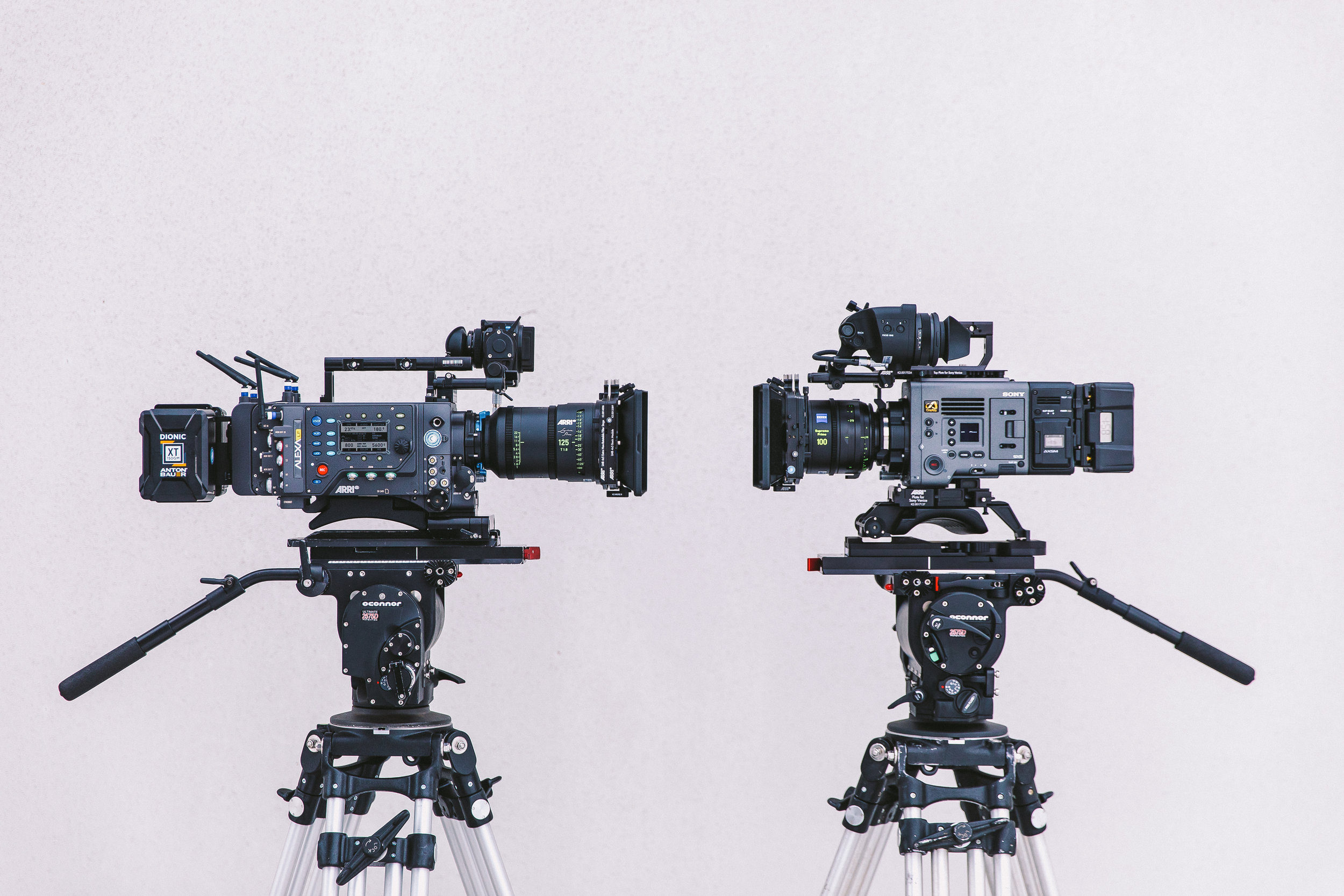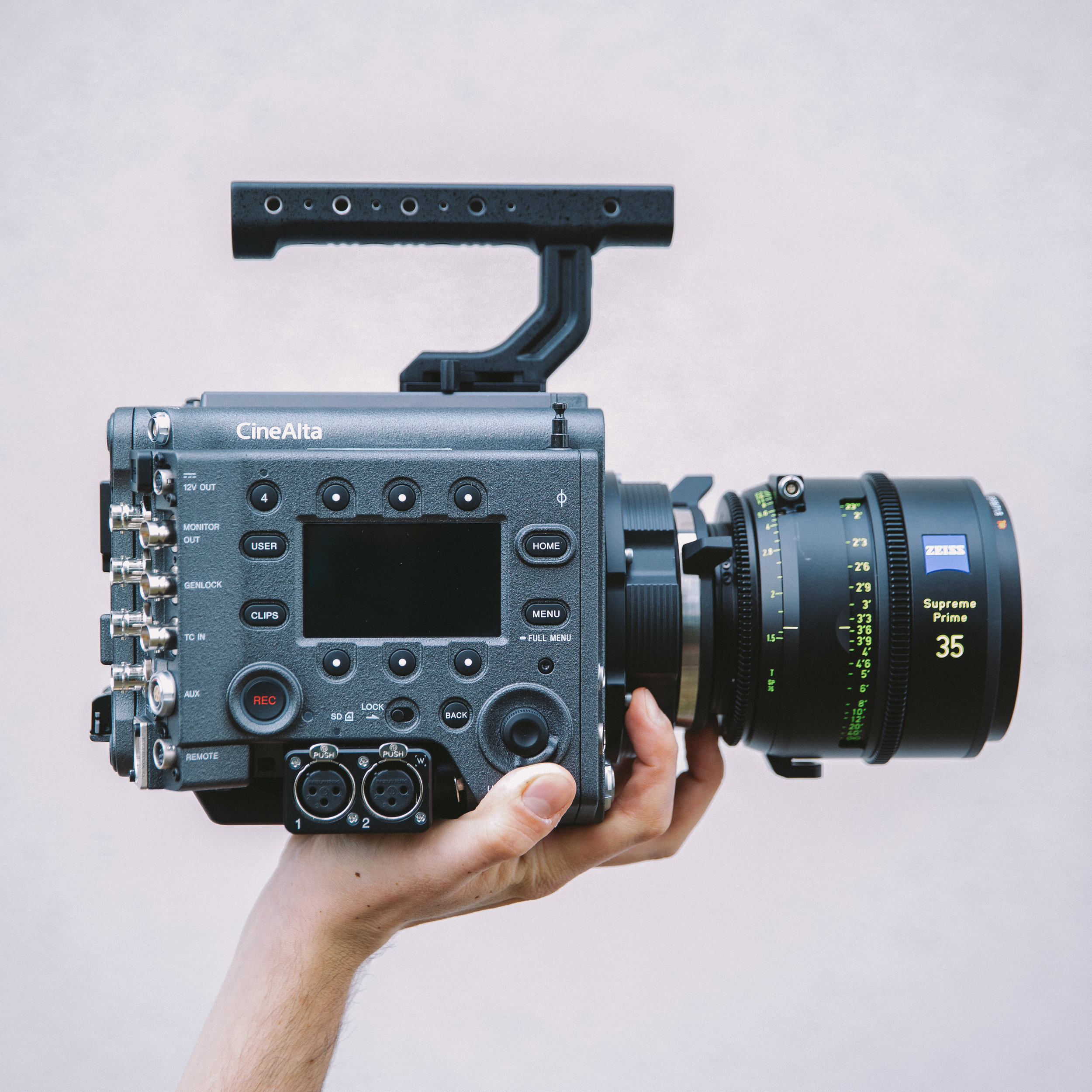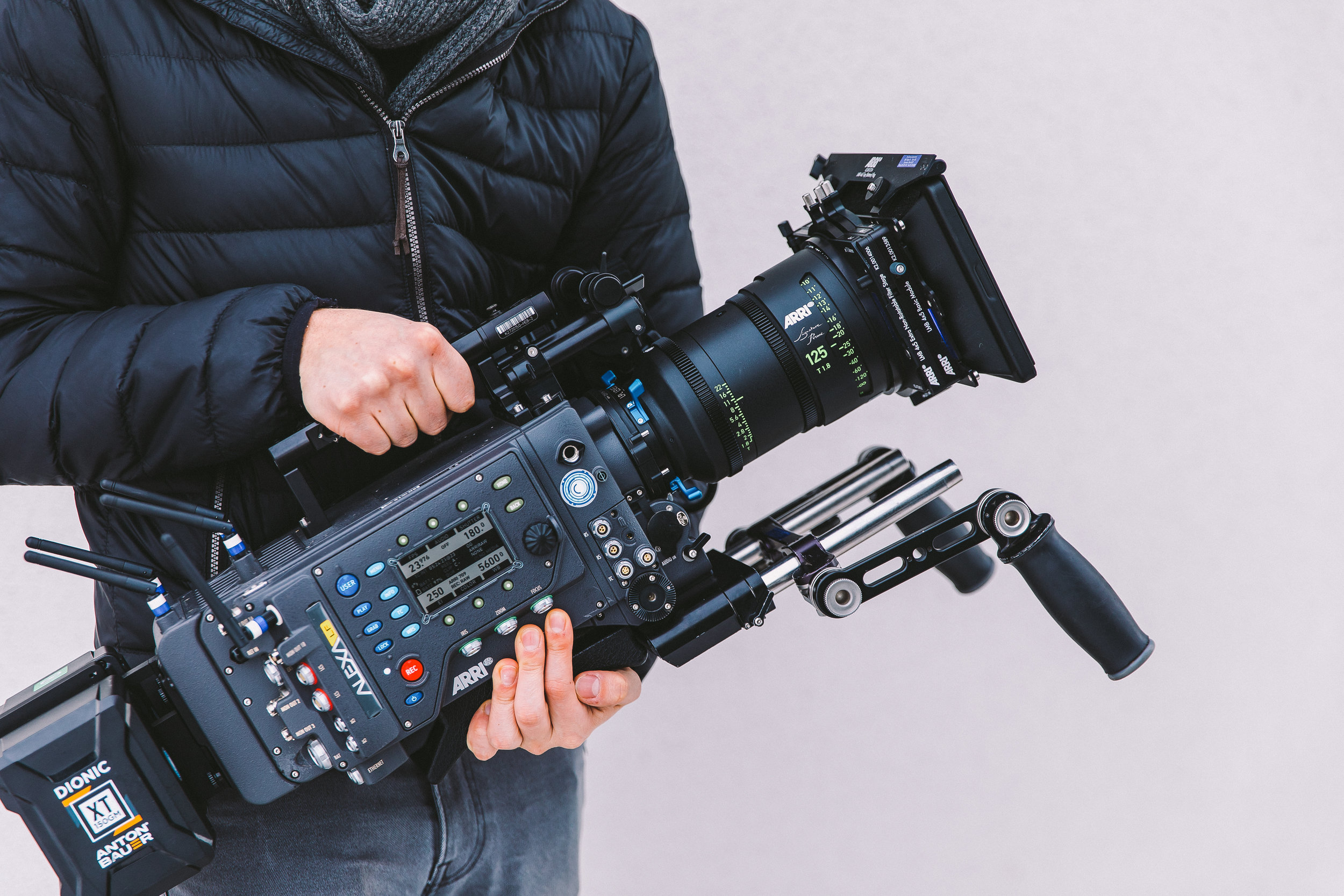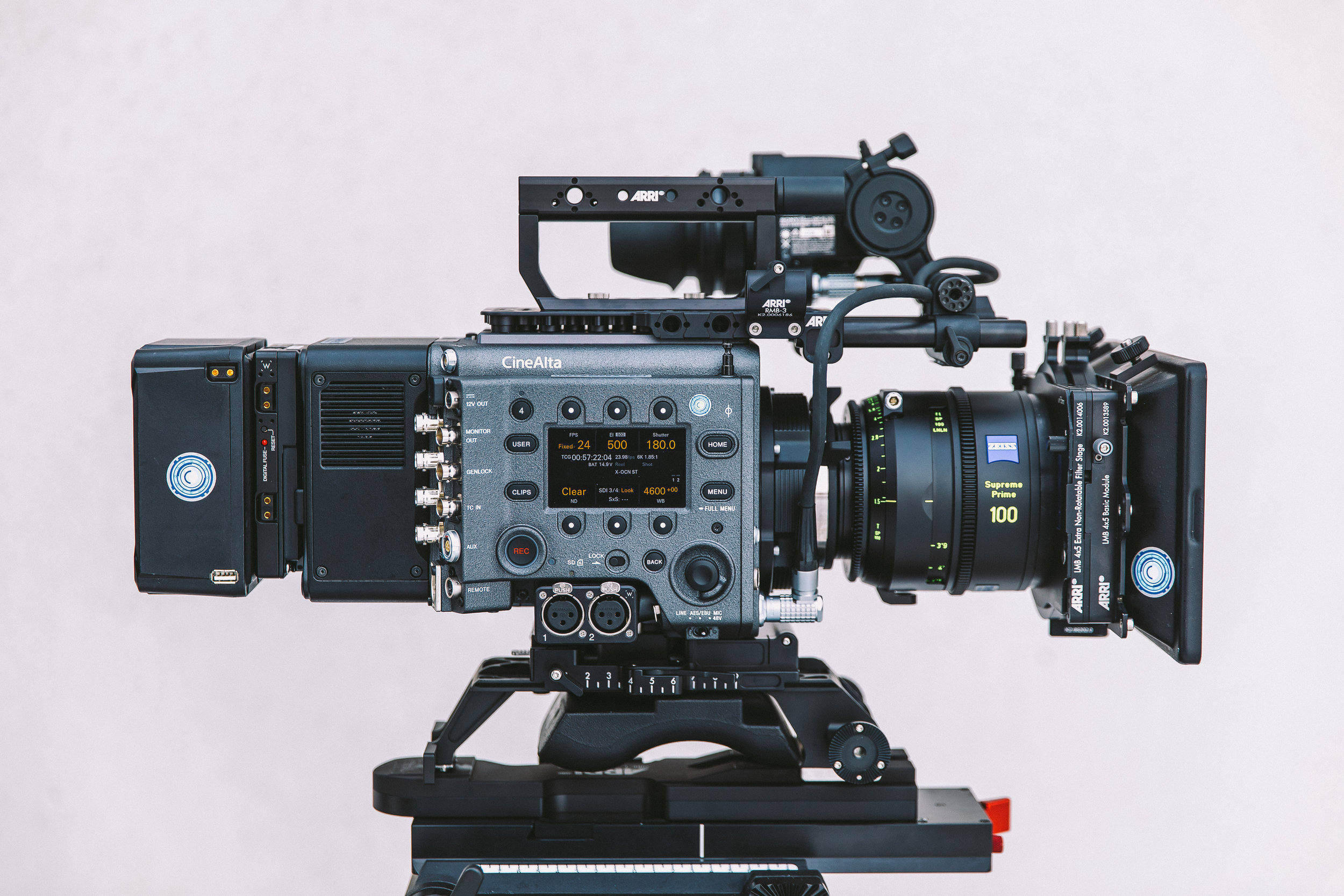Click here to read about the differences between
the Alexa Mini LF and Sony Venice.
Today we are examining some
of the main differences between
the Alexa LF and Sony Venice.
Both are incredible full frame cameras that each have their own unique strengths. Both cameras share similar dynamic range, sensor sizes, and user interfaces. The main differences are the size of each camera body, the frame rates each one can capture, and the resolution of the sensors.
RECORDING, RESOLUTION, AND FRAME RATES
VENICE
The full resolution of the Venice sensor is 6k with a 3:2 aspect ratio and is exactly 36x24mm; the same size 35mm still cameras have been since 1920. The Venice can record internally up to 4k XAVC to SxS cards but will require the R7 recorder to record the full 6k resolution or Raw. Sony’s new X-OCN ST codec is a compressed RAW codec that uses roughly half the amount of storage as ProRes 4444. The downside of a highly compressed codec is it will need more processing power in post. With v4.0 firmware and the HFR license the Venice can now record up to 60fps in full 6k open gate 3:2. It can also go up to 110fps in UHD. The Venice is “Netlfix approved” in all shooting modes.
ALEXA LF
The full resolution of the LF sensor is 4.5k and is slightly larger than full frame. The LF can record either Apple ProRes or uncompressed ArriRaw to onboard Codex SXR drives. High frame rates is where the LF beats the Venice. At full resolution the LF can record up to 90fps in ArriRaw. At a cropped 2.39 sensor mode the camera can record up to 150 fps. The LF does not offer a Super35-sized shooting mode so full frame lenses will be a must unless you crop in post. The LF is “Netlfix approved” in all shooting modes.
BODY DESIGN, SIZE, AND USER EXPERIENCE
VENICE
Unlike the F55, the Venice is constructed from robust magnesium alloy. The body weighs only 8 lbs. making it an excellent option for gimbal applications or shooting in tight environments. On the flip side, it can easily be built up for studio configurations. AC’s will enjoy the plethora of power ports and monitor outputs. It has an Alexa-like LCD panel on the AC side where all menu functions can be controlled. It has an additional LCD on the operator side where basic shooting functions can be controlled. The Venice has a full set of ND’s built in all the way up to ND 2.4 in one stop increments with no color shift. Sony has promised that the Venice menu structure has been simplified by making a condensed menu including only the most used functions. By holding the menu button for three seconds the user can access an extended, F55-like, menu. The Venice boots up in a speedy six seconds.
ALEXA LF
The LF body and viewfinder weigh a whopping 20 lbs. However due to its shape the camera does balance nicely on the shoulder when built out. It shares the same button layout and menu structure as all other Alexa cameras so there is no need to re-learn a whole new camera system. There are no built-in ND’s in the LF so users will have to opt for using traditional glass filters in a mattebox or ND’s that sit in front of the sensor. The LF is a hog when it comes to power and boot time. It takes 30 seconds to boot up where the Venice takes only 6 seconds. One big feature the LF has is built in wireless video transmission. Arri has waged a war on cables by eliminating the need to run separate video and power cables to a wireless transmitter. This wireless video system will only work with Arri’s brand of wireless receivers however.
LENS OPTIONS AND FUTURE UPGRADES
VENICE
The Venice has a native E-mount with a lever locking system. The PL mount sits on top of the E-mount and his held in place with six hex screws. Due to the short flange depth of the E-mount this opens up the ability to adapt to a huge number of lenses from other manufacturers with different mounts. Currently only Sony E-mount lenses can be electronically controlled through the Venice directly. Sony has also promised a long road map of firmware updates and the potential for user-upgraded sensors. This would allow Sony to sell a new sensor block to existing customers instead of selling a whole new camera platform. Some parts on the Venice can replaced by the user where as the LF would have to go to Arri Service for any hardware modifications.
ALEXA LF
The Alexa LF has a native LPL mount. The LPL mount is larger and has a shorter flange depth than the traditional PL mount. The flange depth of the PL mount was spaced to make room for the spinning mirror of a film camera but since digital cameras don’t have spinning mirrors this allows the lenses to be closer to the sensor. The upside to the shorter flange is the ability to make lenses cover full frame more easily with less light loss. This makes for faster and sharper images with less aberrations. The LF comes with a LPL to PL adapter for use with lenses with a traditional PL mount. Currently there are no roadmaps or other lens mounts offered from Arri.
POWER CONSUMPTION
VENICE
The Venice requires 11-32 volts. So it has a single onboard battery mount in addition to a 4-pin XLR. One Anton Bauer XT150 battery displays roughly two hours of runtime where the LF would require two XT 150 batteries at once to achieve similar run time. Our Venice kit includes the Wooden Camera D-box for convenient power distribution. The D-box provides multiple 2-pin and 3-pin accessory power ports.
ALEXA LF
Due to the amount of processing, sensor size, and internal wireless video, the Alexa LF is a power hog. The camera requires a minimum of 19 volts to power so a single onboard battery will not supply enough juice. Our LF kit includes the Wooden Camera sharkfin dual battery plate. This plate takes two Anton Bauer batteries and combines the voltage to power the LF. A battery with a sustained voltage of 10 amps is required so we suggest only using Anton Bauer’s new XT series of batteries with this battery plate. A block battery can still be used solely or in addition to the onboard batteries although hot-swapping while recording is not recommended.
EXPOSURE AND LOOK
VENICE
Another unique feature the Venice offers is two base ISO’s of 500 and 2500 with 15+ stops of dynamic range. Sony says noise levels will look identical at each base but in my testing 2500 does appear to have slightly more noise. Sony also promises more pleasing skintones and a more gentle tonal curve by utilizing the new S709 LUT for monitoring. It is a lower contrast LUT that pushes more towards magenta in an effort to help skintones. S709 has much less contrast than Arri 709 but users always have the ability to tweak the look in post.
ALEXA LF
The nice thing about the Alexa LF is it utilizes the exact same Alexa ALEV sensor we’ve come to know and love over the past 8 years. The only difference being that there are two sensors standing side by side instead of one. Arri has always prioritized image quality over resolution and by borrowing some technology from the Alexa 65 they were able to bring a camera to market that could satisfy cinematographers and streaming platforms like Netflix.
FINAL THOUGHTS
The size of the Venice paired with built-in ND filters will make it the perfect camera for fast paced shooting environments on episodics and documentaries. The shear size of the Alexa LF, lack of internal ND filters, and power requirements are going to make for a slower paced shooting environment. Sony has put all their chips on the Venice, promising to deliver firmware updates and sensor upgrades over the course of the next three years. What I am most curious about is if Arri will ever release a compact, full-frame, cinema camera.










